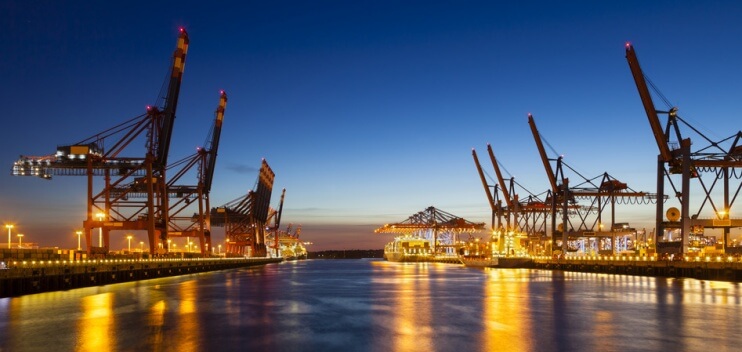Links in your supply chains.
The nodes of your supply network are the suppliers of items, which are contracted to deliver; the movement of items between nodes are the links. The routes selected to deliver your items can be decided by 3PL and shipping companies to suit their business objectives. Could future changes in the links affect your supply network?
The focus for logistics professionals to meet this month/quarter/annual targets can relegate thinking about future challenges to the background. But if logisticians do not look over the fence to see what may be happening, change can sneak up and potentially damage the business.
One of the creeping challenges is consolidation of movement activities. My book A Framework for Supply Chains, identified in figure 6.3 the 10 largest container shipping lines in 2009. In that year they controlled about 58 percent of the world’s container traffic. I wrote that consolidation would increase the market share of major shipping companies and by 2015, the top 10 market share has risen to 64 percent. The same trend is occurring with the top logistics service providers (LSPs); mainly 3PL businesses.
Changing pattern of supply chains
What does market consolidation do for supply chains? It means that power in negotiations can move from the buyer to the supplier; for ports it moves from port operators to shipping companies. This has been in evidence for some years in Europe, where short distances between ports has meant that shipping companies can select ports with the highest efficiency and lowest charges. Because of the effective network of rail, road and river transport in Europe, the port decisions have not had a major effect on shipper’s supply chains. However, elsewhere in the world, distance between ports and the variable quality of inland infrastructure may have a greater effect on the structure of domestic supply chains.
Intra-regional trade is likely to increase in future years more than global trade. This may happen due to: changing views about the location of inventory, higher value adding activities being located closer to the point of sale and reduction in manufacturing activity in developed countries. In addition, in the Asia Pacific region intra-region trade is forecast to increase due to the movement of some manufacturing from China into south east Asia, the commencement of the ASEAN Economic Community (AEC) and Free Trade Agreements (FTA) between counties of Asia and Australia and New Zealand (which should be called Facilitated Trade Agreements, as there remain many trade barriers).
As the shipping companies put their new and larger container ships into service on the Asia – Europe route, older vessels of 8,000 teu become available for service on the smaller volume trades, such as north-south routes. But, few ports are equipped to handle ships of this size, so these routes will emphasise ‘hubbing’, by visiting only one port in a region or sub-region and transhipping containers on smaller vessels (or using rail), resulting in a more effective utilisation of the fleet.
Using Australia as an example, ships currently visit the five main container ports – Brisbane, Sydney, Melbourne, Adelaide and Fremantle (for Perth). However, using 8,000 teu ships means that only Sydney port has the capability to handle ships of this size (the ability to clear the added containers is for another discussion). Under this scenario, ships from north Asia would only call at Sydney and Auckland (New Zealand), then return to Asia. Final delivery of containers to customers would be through trans-shipment by sea or rail. The recent recommendation by a review panel to proceed with the inland rail project for eastern Australia will strengthen the justification for ‘hubbing’ by shipping companies.
Where to locate the business?
The implementation of ‘hubbing’ and the speed and cost of trans-shipment could affect future location decisions by businesses, unless governments make what could eventuate as contentious decisions. For example, Melbourne is currently the largest container port in Australia, but under the ‘hubbing’ scenario would lose that crown and become a transhipment port. To save its position, there is the option of building a new container port in the smaller bay that has deeper water, with trans-shipment between the bays, into Melbourne (rail through built-up areas would be a major challenge). But, as shipping companies have the necessary ships, they are in a strong negotiating position to ask for decisions to be made; and governments may be forced into a quicker decision making cycle than politicians typically experience.
A major part of the decision is whether to invest public money in new port infrastructure, even with private companies equipping the cargo handling facilities. But, government investment would be dependent on written guarantees from shipping companies concerning continual use of the facilities. This risk will be duplicated in Africa and South America – how confident can ports on the east and west coasts be concerning future investments, when Panama looks to be the obvious hub port, especially as the extended Panama Canal will attract larger ships.
So, logisticians need to review and understand the possible effect on supply chains from decisions by shipping companies and 3PLs (which, if foreign owned, are likely to align with their corporate strategy, not that of the country) plus country and state/province governments. As an example, in Australia your supply chain review should commence now, as the first 8,000 teu ships could arrive in Sydney within the next two years.

